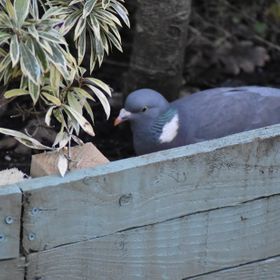Taken in back garden in Devon
Taken in back garden in Devon
Read less
Read less
Views
97
Awards
Spring 23 Award
Same photographer See allBehind The Lens
Behind The Lens
Location
Here’s a great example from dayatocareva: “The photo was taken in my home studio in London. I am a self taught photographer, so every shoot is pretty much a new lesson for me.”Time
Terrific answer from johnallenphoto: “This is probably one of my favorite images. I remember waking up around 5 AM and walking a good distance to the battery in the cold. Had no tripod so I tried to balance the camera on the battery railing as best I could due to the slow shutter speed. It was one of the best mornings I can remember, walking around in the cold and looking out toward the water while garbage trucks were making their rounds before everyone woke up. This was taken on January 21, 2013 at 7:53 AM.”Lighting
A nice explanation on her lighting from Lisawiza: “I wanted this image to look mysterious and to draw the viewer into a scene in a story. There was some beautiful light from the lamppost outside the park gates but it needed more. I decided headlights would be a great way of lighting the scene and adding drama as well as making the story even more intriguing.”Equipment
An good short example from jharris582: ”This was shot on a Canon 7D, with an 18-55mm f/3.5 lens. No other equipment was involved.”Inspiration
A great example from picturesque: “I was looking for a place to shoot the Milky Way on a new Moon. I typically look at areas on youcanseethemilkyway.com for minimal light pollutions spots and use google maps to finds a good parking area and directions. I had my fellow photographer friend Dani and another friend June along for the trip. I originally wanted to use some abandoned building for the shot but when we arrived realized they had collapsed and wouldn’t work so I used the Joshua tree in the framing instead.”Editing
Sample answer from paolobubu: “Usually landscape photography requires a lot of processing. In this particular case, I had to develop the raw 2 times (one for the land and another for the sky) to correct the white balance (since the auto option in the camera usually kills the color of the sunset). Then I proceeded to merge the 2 raws using luminosity masks.”In my camera bag
A great example from corindimopoulos: “The first thing I always pack is my Canon 85mm 1.2 prime. A monkey could take an amazing picture with that lens, and given I am not that much more evolved, it has become my favourite piece of kit. I then pack a Canon 1Dx body, simply because it’s bomb-proof, and a second-hand 300mm 2.8 prime which is bigger than a bazooka but I enjoy using it. The third, but no less important lens is my Zeiss 21mm 2.8 prime. Jonathan Critchley recommended it and immediately my images improved. I love the weight of it. I like my equipment to weigh a lot. It gives me faith in the quality and robustness…”Feedback
Here’s a response from macnuel we particularly liked: “The southern tip of Chile has unique characteristics. The weather changes abruptly depending on the day, you can have sun, snow, wind or calm, all in one trip. One of the major features of a landscape photographer is to have patience and wait for the right time, which is essential in a place like this. Be prepared for the diversity of landscapes, colors and situations. Dawn and dusk are key moments, however daylight conditions, lenticular clouds and wind creates atmospheres as it happens. Diversify, have patience and plan ahead.”



























